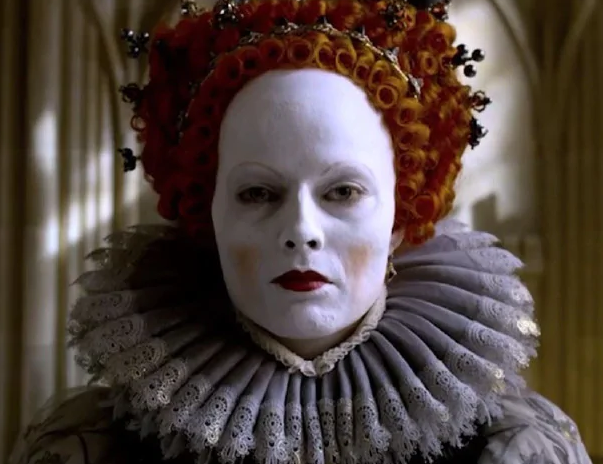Considering the prevalence of makeup today, be it through social media platforms like TikTok or Instagram, even on people – that is mostly women – in our daily lives, I began to grow curious about what makeup was like in the past and if it even existed.
I came across this video on Queen Elizabeth I and how her own makeup may have caused her death. Looking at the portrayals of what she might have looked like at that time, I felt slightly horrified that that used to be the standard of beauty.
During her reign, she suffered from smallpox which left scars and marks on her face, leaving her self-conscious and even more persistent in regaining her beauty especially as a royal figure (Charlseton, 2019). It was found that their version of our modern day foundation, called “venetian ceruse”, contained lead while their lipstick contained mercury (Brophy, 2022). Historians have hypothesised that perhaps the thick and consistent reapplications of makeup on her skin, may have caused lead and mercury poisoning, resulting in her skin and even mental deterioration near the end of her life (Seaver, 2023).
While all these news and findings on Queen Elizabeth may seem sensational, the usage of such highly-toxic makeup was not only limited to the royalty. The need to chase after beauty and perfection was widespread amongst the common folk as well. The usage of kohl, a common product used in ancient Egypt to line the eyes, was also found to contain dangerous levels of lead (Parry and Eaton, 1991). Lead, mercury and even arsenic were also found in the cosmetic products of women during the Roman Empire, where these toxic metals were seen as the key to a “fair” complexion and “healthy” colours on the face (Stewart, 2019).
Although many may scoff and assume that using such toxic products on one’s skin is a mistake of the past, we need to realise that the chemicals found in our current day products and their potential pollutive impacts on our health and environment are also not fully studied. In the next part of this series, we will then delve deeper into makeup today and its pollution impacts.
References
Brophy, M. (2022, June 12). Was queen Elizabeth I killed by her poisonous white makeup? Ancient Origins Reconstructing the story of humanity’s past. Retrieved April 12, 2023, from https://www.ancient-origins.net/history-famous-people/elizabeth-makeup-0016887
Charleston, L.-J. (2019, May 10). The truth behind Queen Elizabeth’s white ‘clown face’ makeup. Medium. Retrieved April 12, 2023, from https://libbyjanecharleston.medium.com/the-truth-behind-queen-elizabeths-white-clown-face-makeup-c0507a178bd5
Parry, C., & Eaton, J. (1991). Kohl: A lead-Hazardous Eye makeup from the Third World to the first world. Environmental Health Perspectives, 94, 121–123. https://doi.org/10.1289/ehp.94-1567936
Seaver, C. (2023, January 29). Did makeup cause the death of Queen Elizabeth I of England? History Defined -. Retrieved April 12, 2023, from https://www.historydefined.net/did-makeup-cause-the-death-of-queen-elizabeth-i-of-england/
Stewart, S. (2019). “Gleaming and deadly white.” Toxicology in Antiquity, 301–311. https://doi.org/10.1016/b978-0-12-815339-0.00020-2

